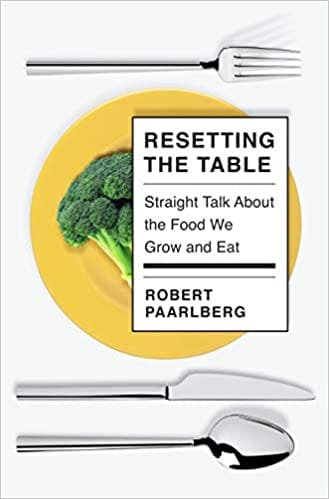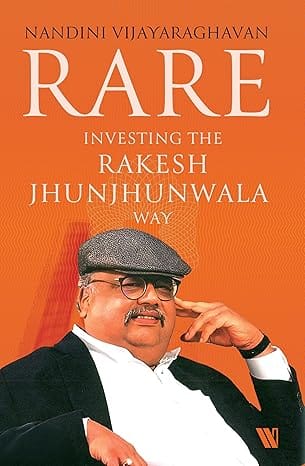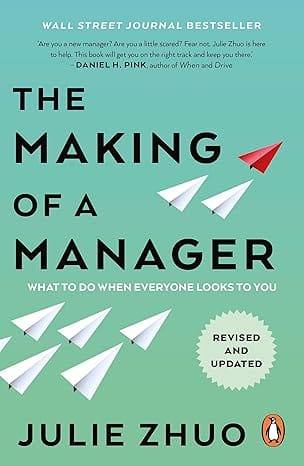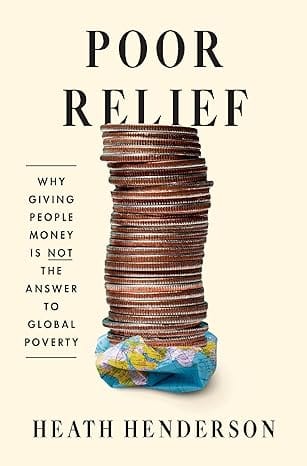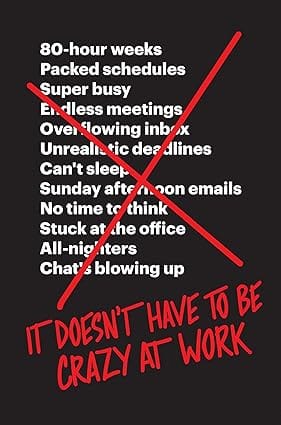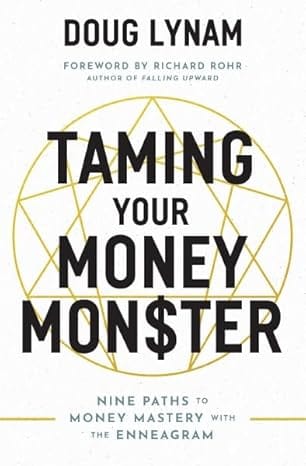WELCOME TO MIDLAND BOOK SHOP!
SHOP FOR
- Non-ficton
- Non-ficton
- Contemporary Fiction
- Contemporary Fiction
- Children
- Children
- Comics & Graphic Novels
- Comics & Graphic Novels
- Non-Fiction
- Non-Fiction
- Fiction
- Fiction
Shop No.20, Aurobindo Palace Market, Hauz Khas, Near Church +91 9818282497 | 011 26867121 110016 New Delhi IN
Midland The Book Shop ™
Shop No.20, Aurobindo Palace Market, Hauz Khas, Near Church +91 9818282497 | 011 26867121 New Delhi, IN
+919871604786 https://www.midlandbookshop.com/s/607fe93d7eafcac1f2c73ea4/677cda367903fd013d69b606/without-tag-line-480x480.png" [email protected]9780525656449 60df0e13e1c8ca3ab1abbeaf Resetting the Table: Straight Talk About the Food We Grow and Eat https://www.midlandbookshop.com/s/607fe93d7eafcac1f2c73ea4/60df0e14e1c8ca3ab1abbed7/417r2cfw-ml-_sx327_bo1-204-203-200_.jpg A bold, science-based corrective to the groundswell of misinformation about food and how it's produced, examining in detail local and organic food, food companies, nutrition labeling, ethical treatment of animals, environmental impact, and every other aspect from farm to table Consumers want to know more about their food--including the farm from which it came, the chemicals used in its production, its nutritional value, how the animals were treated, and the costs to the environment. They are being told that buying organic foods, unprocessed and sourced from small local farms, is the most healthful and sustainable option. Now, Robert Paarlberg reviews the evidence and finds abundant reason to disagree. He delineates the ways in which global food markets have in fact improved our diet, and how "industrial" farming has recently turned green, thanks to GPS-guided precision methods that cut energy use and chemical pollution. He makes clear that America's serious obesity crisis does not come from farms, or from food deserts, but instead from "food swamps" created by food companies, retailers, and restaurant chains. And he explains how, though animal welfare is lagging behind, progress can be made through continued advocacy, more progressive regulations, and perhaps plant-based imitation meat. He finds solutions that can make sense for farmers and consumers alike and provides a road map through the rapidly changing worlds of food and farming, laying out a practical path to bring the two together. Product description Review “A provocative book . . . [Paarlberg] isn’t ideological and throws cold water on widely held progressive and conservative beliefs alike. He is skeptical of the emphasis on locally grown food and argues that food deserts aren’t so much of a problem as the way food companies have figured out to market unhealthy foods so that we will buy them. He’s making me think, always a good thing.”—Nicholas Kristof, The New York Times “Chapter by chapter, Resetting the Table demolishes the preconceived beliefs of smart eaters raised on progressive, post-1960s culinary social movements . . . Through a mix of history, science and reportage, [Paarlberg] makes a convincing case . . . Resetting the Table is sure to be controversial, and should be widely read and debated.”—Rien Fertel, The Wall Street Journal “Paarlberg pushes back against fashionable trends touted by the likes of Michael Pollan and Alice Waters, arguing that locavore and pre-industrial practices require a lot of dough, and won’t work for society writ-large . . . A compelling take for anyone interested in food and its future.”—Nina MacLaughlin, The Boston Globe “Broadly and deeply informed. . . All in all, an almost indispensable guide to our food system—and how to make that system work better.”—Alan Moores, Booklist (starred review) “A clear-eyed look at the present and future of food production . . . Paarlberg places the blame for our current epidemic of obesity and diet-related health problems firmly on the shoulders of food manufacturing, grocery stores, and restaurants for their promotion of unhealthy food. He concludes that commercial farmers did not bring on the food crisis, but they can help to address it by breaking political ranks and siding with progressive attempts to improve dietary health . . . A book that will be of interest to everyone who is concerned about the health effects of food.”—Rachel Owens, Library Journal "A perceptive analysis of America's food system. Paarlberg levels a well-informed, evidence-based critique of a broad swath of players in food production and consumption . . . A cogent, revealing look at the future of food."—Kirkus Reviews "Astute . . . Environmentally conscience readers will find much food for thought in this informative narrative."—Publishers Weekly “A terrific book. Robert Paarlberg makes clear that if crops don’t come in, little else matters. Resetting the Table shows how the whole world can be fed without environmental harm, and that’s worth listening to. This book accomplishes what is so rare in contemporary writing—being urgent yet reasonable at the same time.”—Gregg Easterbrook, author of It’s Better Than It Looks: Reasons for Optimism in an Age of Fear "On a topic all too often subjected to wild claims, emotional argument and rejection of evidence in favor of prejudice, Robert Paarlberg brings welcome good sense, a wealth of facts and an eloquent use of language. His suggestions for how to improve our systems of food production, while benefiting the environment, are vitally important."—Matt Ridley, author of How Innovation Works "Drawing on a lifetime of global experiences in agriculture and food systems, Paarlberg challenges the concepts of organic, local, and small-scale as the solutions to feeding the world’s population a healthy and sustainable diet. Does the science-based, technology-driven plate he offers provide a path to this goal? Anyone seriously interested in this existential issue should get this highly readable and thoughtful book."—Walter Willett, author of Eat, Drink, and Be Healthy "Robert Paarlberg’s Resetting the Table is a fresh, deeply researched and courageous study of the unprecedented challenge of ensuring a healthful diet in an era of super-abundant food. Paarlberg demolishes currently-popular solutions such as local, organic, and micro-scale enterprises, while taking on commercial farmers, food companies and supermarkets for turning a blind eye to problems in the food supply. In doing so, he provides much needed context for all those concerned to bring the food system into line with human needs."—Rachel Laudan, author of Cuisine and Empire: Cooking in World History “Resetting the Table is gutsy, objective, and beautifully written. Paarlberg advocates ‘ecomodern’—sensible—farming practices that benefit farmers, the environment, animals, and consumers. In the process he skewers some widespread, but fallacious, criticisms of America’s food system. This book is must reading for anyone seeking to understand controversies over food and farming."—Michael F. Jacobson, co-founder of the Center for Science in the Public Interest "In Resetting the Table, Robert Paarlberg fact checks the most central myths of the modern food movement. Paarlberg’s firm grasp on the realities of modern agriculture lend credence to his insights on how we might take meaningful steps toward solving our dietary and environmental ills. He argues that food policy, rather than farm policy, should serve as the focal point of action. In doing so, he offers valuable straight talk to commercial farmers and highlights the critical importance of continued innovation and entrepreneurship in agricultural production. This is a must read book for anyone interested in understanding where their food comes from and the policies that affect how we eat." —Jayson Lusk, Distinguished Professor and Head, Agricultural Economics Department, Purdue University “Dr. Paarlberg cogently argues for the potential power and benefits of science in farming—while aptly wondering if we can trust ourselves to use this power responsibly. He neatly clarifies some popular misconceptions—detailing, for example, how U.S. agricultural policy often raises, rather than lowers, prices of subsided U.S. crops—while highlighting largely unrecognized and damaging cultural divides, such as that between commercial farmers and consumers. And, he calls for America’s commercial farmers to help bridge that gap by joining the advocacy movement for better nutrition and health.”—Dariush Mozaffarian, Jean Mayer Professor of Nutrition and Medicine, Friedman School of Nutrition Science & Policy, Tufts University About the Author ROBERT PAARLBERG is adjunct professor of public policy at the Harvard Kennedy School and an associate at Harvard's Weatherhead Center. He has been a member of the Board of Agriculture and Natural Resources at the National Research Council, a member of the Board of Directors at Winrock International, and a consultant to the International Food Policy Research Institute, the U.S. Agency for International Development, and the Bill and Melinda Gates Foundation. He is the author of Starved for Science, Food Politics, and The United States of Excess. He lives in Massachusetts. Excerpt. © Reprinted by permission. All rights reserved. Chapter 1 Testing the Case Against Industrial Farming Modern industrial farming did not bring unhealthy eating to the United States. Poor nutrition has been a problem from the start, originally linked to preindustrial poverty. A century and a half ago, most American citizens had so little income they could could afford cheap stomach-filling foods like bread and potatoes. Because this was a diet lacking in protein and micronutrients, Americans remained short in stature and vulnerable to a wide variety of diet-linked ailments well into the twentieth century. Diets finally began to diversify in the late nineteenth and early twentieth centuries, but not because farming had changed. Instead, industrial development had brought increased urbanization and higher personal income, along with improved food access thanks to innovations such as refrigerated rail cars, packaged and processed foods, and supermarkets. This gave consumers a wider range of choice, so milk and fruit consumption increased as bread and potato consumption declined. Potato consumption in the United States fell by nearly half on a per capita basis between 1909 and 1959, while flour and cereal product consumption dropped by more than half. Even so, serious nutrient deficits persisted. Pellagra, a disease caused by a niacin deficit, led to the death of 100,000 Americans during the first three decades of the twentieth century. Rickets, a deforming ailment caused by vitamin D deficiency, afflicted three-quarters of infants in New York City in 1921. As late as the Second World War, inadequate nutrition made it hard for the army to find enough young men fit for military service. General Lewis B. Hershey, head of the Draft Board, testified that “probably one-third” of the men rejected for service in that war failed to qualify because of disabilities linked to nutrition deficits. Industrial farming was not the source of these problems, since it hadn’t yet arrived. The nation’s food production system was still heavily dependent on small, local, diverse farms that used few if any chemicals. In the second half of the last century, added gains in personal income contributed to still more dietary enrichment. This, plus targeted feeding programs like Food Stamps after the 1960s, eventually corrected most of America’s nutrition deficiency problems. But then, with barely a pause, America went from being underfed to being overfed. Between the early 1960s and 2018, the prevalence of obesity in the United States tripled to reach an astonishing 42 percent. Chronic ailments such as diabetes and cardiovascular disease, linked to excessive consumption of energy-dense foods and processed meats, emerged as the nation’s number one public health problem. Estimates based on known diet-disease relationships suggest that twice as many Americans now die from eating processed meats as in car accidents. Nearly half of all U.S. deaths due to heart disease, stroke, and diabetes are now diet linked. Poor diets have even returned as a national security concern, since one in three young Americans nationwide is now too fat to enlist in the military. Other wealthy countries also face dietary problems, but on the European continent, obesity rates tend to be only half as high as in the United States. In November 2018, the Economist Intelligence Unit published rankings of thirty-five high-income countries in the category of meeting “nutritional challenges,” and the United States came in next to last, barely ahead of Saudi Arabia. When these problems with modern eating first emerged in America, nobody blamed industrial farming. Rather than pointing the finger at Big Ag, most critics focused correctly on Big Food. Eric Schlosser’s 2001 classic, Fast Food Nation: The Dark Side of the All-American Meal, singled out fast-food restaurant chains. Schlosser devoted only three of his 288 pages to farming, and the index to his book has no entry at all for “agriculture.” In that same year, nutritionist Marion Nestle also produced an important book, Food Politics: How the Food Industry Influences Nutrition and Health, with no indexed references to either farms or farming. A subsequent book by Anthony Winson on our “industrial diet” traced poor eating not to farms or farm subsidies but to food processors and manufacturers, retailers, and restaurant chains. Looking at farms, the nutrient quality of some foods grown today has been diminished. Mark Schatzker, author of The Dorito Effect: The Surprising New Truth About Food and Flavor, observed that for most of the twentieth century, farm crops and farm animals were developed to deliver things like rapid growth, cosmetic appearance, shelf life, processing traits, and resistance to pests and disease. There was little or no emphasis on nutrition, or even on flavor, which is a trait associated with nutrition. One 2004 study examining the nutrient content of forty-three garden crops between 1950 and 1999 found a decline in six out of thirteen nutrients contained in these crops, including a 38 percent drop for riboflavin. Yet Schatzker’s solution is to change the way we breed crops and animals, not the way we farm. Nothing will be gained by growing a nutrient-poor variety of broccoli on a small farm rather than a large farm, or on a local farm rather than a distant farm. Breeding flavor back into the varieties of crops and animals used on farms has now become an active project. In 2018, chef and author Dan Barber co-founded the Row 7 Seed Company to provide growers with more flavorful options. Barber has worked with Cornell University plant breeder Michael Mazourek to bring more flavor into a mini version of a butternut squash, called the honeynut, which has thinner skin so it doesn’t have to be peeled and a sweetness that intensifies with cooking. These new efforts are heavily focused on taste and are mostly chef driven. For example, the Culinary Breeding Network in Oregon now connects chefs to breeders and hosts public tastings to demonstrate the delicious result. At one showcase event in New York City attended by four hundred people, the new varieties available to taste included a blue fenugreek that smelled like maple syrup, a new Primero Red chili for hot taco sauce, and leaves from a new variety of amaranth. The diminished nutrient content of food needs correcting, but the excess calories we consume are far more damaging to our health. Average per capita food calorie consumption in the United States (based on calories available adjusted for spoilage and other waste) increased 25 percent between 1970 and 2002. Physical activity levels declined as well, but this was not the heart of the problem according to Marion Nestle. “Large portions are a sufficient explanation for why people are gaining weight. It’s not because of lack of exercise; it’s because we’re eating more.” Portion sizes in restaurants are one contributor. Compared to 1986, average entrée portions in fast-food chains by 2016 were delivering ninety more calories. Nutritionist Lisa Young (known as the “portion teller”) famously dramatized this historical increase in serving sizes for bagels, hamburgers, and soda in the film Super-Size Me. It takes surprisingly little time for a simple reduction in food intake to begin bringing health improvements. In one study with 143 healthy men and women between twenty-one and fifty years of age, all were allowed to choose their own variety of foods but half were asked to reduce total calorie intake. Over a two-year period the restricted group reduced total calorie intake by only 12 percent yet still lost an average of sixteen pounds. Those on calorie restriction also saw many of their cardiovascular and metabolic health markers improve, even though all had started within the normal range. Increased calorie consumption in America was also caused in part by unsound medical advice. In the 1970s, physicians and nutrition experts told us to minimize consumption of saturated fats to protect against heart disease. Research would later reveal that saturated fats had a relatively weak link to heart disease, falling somewhere between good fats (monounsaturated and polyunsaturated) and the bad industrial-made trans fats. But the damage had already been done; the fat avoidance recommendations had driven eaters to consume far too many carbohydrates instead. These carbs tended to leave the body less satiated, so hunger returned sooner and still more calories were then consumed. In addition to being excessive, American eating is badly unbalanced across different food groups and nutrient categories. Every five years the USDA and the Department of Health and Human Services promulgate their “Dietary Guidelines for Americans,” intended as a common standard for what a balanced diet should look like. It is revealing to compare these guidelines to America’s actual eating patterns, as measured in the National Health and Nutrition Examination Survey. More than four-fifths of Americans fail to consume the recommended quantity of vegetables, and three-quarters are low in fruits, dairy, and oils. Meanwhile, more than half exceed the recommended intake limits for grain and protein foods, nearly two-thirds consume too much added sugar and saturated fat, and almost nine out of ten consume too much salt. Critics of industrial agriculture have tried to trace this imbalance in what we eat to an imbalance in what America’s farms produce. Corn and soybean production currently takes up more than half of all farmland area in the United States, and both of these crops are used to feed the cattle and pigs that give us too much meat, as well as the cows that give us ice cream and cheese. These crops are also key ingredients in energy-dense snack and junk foods, and the syrup made from corn sweetens our drinks. The critics say our diet would improve if our farmers grew less corn and soy, and more fruits and vegetables. Michael Pollan traces this imbalance to farm subsidies encouraging too much commodity crop production: “We create incentives for our farmers to grow huge quantities of corn and soy, mostly in the Midwest,” he told one university audience in 2017. “Corn and soy is really where the calories in most of the junk food come from . . . we have inadvertently created a system where the cheapest calories in the supermarket are the least healthy.” Food consumers, according to Pollan, have been suffering from a “plague of cheap corn.” This theme was picked up and amplified in popular films like King Corn, and Food, Inc., the latter being nominated in 2009 for an Academy Award. The American diet is not, however, determined by what American farms produce. Our farms do produce a lot of corn, but more than one-third of it never enters the human food supply because it is used to make ethanol, an alcohol we mix with gasoline for auto fuel. Another 14 percent of our corn crop is exported to foreign livestock producers, along with 60 percent of America’s soybeans, so none of this enters America’s food supply either. Corn and soy are principally animal feeds, and we grow more of these crops today because rising incomes, particularly in East Asia, have driven up consumer demand for meat, milk, and eggs in the global marketplace. Meanwhile, America’s lower production of fruits and vegetables is corrected through imports. More than half of America’s fresh fruit consumption is now imported, along with almost a third of its fresh vegetables. Four-fifths of America’s fish consumption is also imported. Is this a bad thing? In 2018 Pollan told the New York Times, “I had no idea that more than half our fruit is imported, and it shocks me that this has happened so quickly.” Without these imports America’s diet would be much further out of balance, so shock may not be the proper reaction. In addition to missing the role of imports, exports, and the use of so much corn for fuel, most critics misunderstand the operation of farm subsidies. They assume farm subsidies are making food artificially cheap when they actually do the opposite. The purpose of these subsidies has always been to increase the income of farmers, and one simple way to do this is to push up the price that farmers get for their crops, so this is what typically happens. One study by three independent agricultural economists published in the journal Food Policy in 2008 showed that market prices for soybeans, rice, sugar, fruits, vegetables, beef, pork, and milk were all being propped up—not pushed down—by federal farm subsidy policies. Food prices are sometimes pushed up by restricting imports from abroad, sometimes by paying farmers to take land out of production, and sometimes by mandating the purchase of farm commodities for things like ethanol production or foreign food aid. The result in each case will be fewer commodities left in the American market, not more, and hence a higher price paid by consumers. One interesting case is sugar, a commodity two-thirds of Americans currently consume to excess. We would be consuming even more sugar if the federal government weren’t propping up the price through a tariff rate quota on imports of sugar from abroad. These import restrictions, which have existed in one form or another since the 1930s, increase not only the domestic price of sugar, but also the price of other sweeteners such as high-fructose corn syrup. Between 1982 and 2012, thanks to this restrictive import policy, the average price of sugar inside the U.S. market was 64 percent higher than on the international market. This policy is enacted by Congress in response to a well-organized sugar lobby that represents not just sugarcane producers in Florida (politically important as a swing state) but also sugarbeet producers in Minnesota, Idaho, North Dakota, and Michigan. Florida sugar barons like the Fanjul brothers have routinely used political access at the highest levels of government to keep the import restrictions in place. Their influence is legendary. During the 1998 impeachment effort against President Bill Clinton, Monica Lewinsky testified under oath that the president had been willing to interrupt one of his private Oval Office sessions with her to take a phone call from Alfonso Fanjul. The federal government also pushes up wheat prices by paying farmers in Kansas and other states to take land out of production under the so-called Conservation Reserve Program (CRP). This makes bread more expensive. In 2006, when Michael Pollan was claiming that farm subsidies made food cheap, the CRP was idling thirty-seven million acres of cropland, an area larger than the entire state of Iowa, thus keeping food prices high. Pollan’s 2006 account also misconstrued a policy change in 1973 that ended some Depression-era “supply control” measures, plus other programs for the purchase and storage of surplus production. According to Pollan, President Nixon’s secretary of agriculture, Earl Butz, devised these changes to make farm commodities cheaper, to the benefit of food processing and manufacturing companies, livestock industries, and also grain-exporting firms like Cargill that could use the lower prices to undersell foreign competitors. It certainly sounded like something the Nixon administration would do. But the 1973 changes were triggered by a sudden upward spike in the price of farm commodities, so they were undertaken not to ensure low food prices, but to avoid disastrously high prices. 9780525656449
out of stock INR 719
1 1
Email ID already exists!
Your Current password is incorrect
Password Updated Successfully
Thanks for your Feedback
- Home
- Business And Economics
- Resetting the Table: Straight Talk About the Food We Grow and Eat
Resetting the Table: Straight Talk About the Food We Grow and Eat
ISBN: 9780525656449
₹719
₹899 (20% OFF)SIZE GUIDE
Back In Stock Shortly - Fill The Book Request Form
Sold By: Hauz Khas - Aurobindo Market
Details
- ISBN: 9780525656449
- Author: Robert Paarlberg
- Publisher: Knopf
- Pages: 368
- Format: Hardback
Book Description
A bold, science-based corrective to the groundswell of misinformation about food and how it's produced, examining in detail local and organic food, food companies, nutrition labeling, ethical treatment of animals, environmental impact, and every other aspect from farm to table Consumers want to know more about their food--including the farm from which it came, the chemicals used in its production, its nutritional value, how the animals were treated, and the costs to the environment. They are being told that buying organic foods, unprocessed and sourced from small local farms, is the most healthful and sustainable option. Now, Robert Paarlberg reviews the evidence and finds abundant reason to disagree. He delineates the ways in which global food markets have in fact improved our diet, and how "industrial" farming has recently turned green, thanks to GPS-guided precision methods that cut energy use and chemical pollution. He makes clear that America's serious obesity crisis does not come from farms, or from food deserts, but instead from "food swamps" created by food companies, retailers, and restaurant chains. And he explains how, though animal welfare is lagging behind, progress can be made through continued advocacy, more progressive regulations, and perhaps plant-based imitation meat. He finds solutions that can make sense for farmers and consumers alike and provides a road map through the rapidly changing worlds of food and farming, laying out a practical path to bring the two together. Product description Review “A provocative book . . . [Paarlberg] isn’t ideological and throws cold water on widely held progressive and conservative beliefs alike. He is skeptical of the emphasis on locally grown food and argues that food deserts aren’t so much of a problem as the way food companies have figured out to market unhealthy foods so that we will buy them. He’s making me think, always a good thing.”—Nicholas Kristof, The New York Times “Chapter by chapter, Resetting the Table demolishes the preconceived beliefs of smart eaters raised on progressive, post-1960s culinary social movements . . . Through a mix of history, science and reportage, [Paarlberg] makes a convincing case . . . Resetting the Table is sure to be controversial, and should be widely read and debated.”—Rien Fertel, The Wall Street Journal “Paarlberg pushes back against fashionable trends touted by the likes of Michael Pollan and Alice Waters, arguing that locavore and pre-industrial practices require a lot of dough, and won’t work for society writ-large . . . A compelling take for anyone interested in food and its future.”—Nina MacLaughlin, The Boston Globe “Broadly and deeply informed. . . All in all, an almost indispensable guide to our food system—and how to make that system work better.”—Alan Moores, Booklist (starred review) “A clear-eyed look at the present and future of food production . . . Paarlberg places the blame for our current epidemic of obesity and diet-related health problems firmly on the shoulders of food manufacturing, grocery stores, and restaurants for their promotion of unhealthy food. He concludes that commercial farmers did not bring on the food crisis, but they can help to address it by breaking political ranks and siding with progressive attempts to improve dietary health . . . A book that will be of interest to everyone who is concerned about the health effects of food.”—Rachel Owens, Library Journal "A perceptive analysis of America's food system. Paarlberg levels a well-informed, evidence-based critique of a broad swath of players in food production and consumption . . . A cogent, revealing look at the future of food."—Kirkus Reviews "Astute . . . Environmentally conscience readers will find much food for thought in this informative narrative."—Publishers Weekly “A terrific book. Robert Paarlberg makes clear that if crops don’t come in, little else matters. Resetting the Table shows how the whole world can be fed without environmental harm, and that’s worth listening to. This book accomplishes what is so rare in contemporary writing—being urgent yet reasonable at the same time.”—Gregg Easterbrook, author of It’s Better Than It Looks: Reasons for Optimism in an Age of Fear "On a topic all too often subjected to wild claims, emotional argument and rejection of evidence in favor of prejudice, Robert Paarlberg brings welcome good sense, a wealth of facts and an eloquent use of language. His suggestions for how to improve our systems of food production, while benefiting the environment, are vitally important."—Matt Ridley, author of How Innovation Works "Drawing on a lifetime of global experiences in agriculture and food systems, Paarlberg challenges the concepts of organic, local, and small-scale as the solutions to feeding the world’s population a healthy and sustainable diet. Does the science-based, technology-driven plate he offers provide a path to this goal? Anyone seriously interested in this existential issue should get this highly readable and thoughtful book."—Walter Willett, author of Eat, Drink, and Be Healthy "Robert Paarlberg’s Resetting the Table is a fresh, deeply researched and courageous study of the unprecedented challenge of ensuring a healthful diet in an era of super-abundant food. Paarlberg demolishes currently-popular solutions such as local, organic, and micro-scale enterprises, while taking on commercial farmers, food companies and supermarkets for turning a blind eye to problems in the food supply. In doing so, he provides much needed context for all those concerned to bring the food system into line with human needs."—Rachel Laudan, author of Cuisine and Empire: Cooking in World History “Resetting the Table is gutsy, objective, and beautifully written. Paarlberg advocates ‘ecomodern’—sensible—farming practices that benefit farmers, the environment, animals, and consumers. In the process he skewers some widespread, but fallacious, criticisms of America’s food system. This book is must reading for anyone seeking to understand controversies over food and farming."—Michael F. Jacobson, co-founder of the Center for Science in the Public Interest "In Resetting the Table, Robert Paarlberg fact checks the most central myths of the modern food movement. Paarlberg’s firm grasp on the realities of modern agriculture lend credence to his insights on how we might take meaningful steps toward solving our dietary and environmental ills. He argues that food policy, rather than farm policy, should serve as the focal point of action. In doing so, he offers valuable straight talk to commercial farmers and highlights the critical importance of continued innovation and entrepreneurship in agricultural production. This is a must read book for anyone interested in understanding where their food comes from and the policies that affect how we eat." —Jayson Lusk, Distinguished Professor and Head, Agricultural Economics Department, Purdue University “Dr. Paarlberg cogently argues for the potential power and benefits of science in farming—while aptly wondering if we can trust ourselves to use this power responsibly. He neatly clarifies some popular misconceptions—detailing, for example, how U.S. agricultural policy often raises, rather than lowers, prices of subsided U.S. crops—while highlighting largely unrecognized and damaging cultural divides, such as that between commercial farmers and consumers. And, he calls for America’s commercial farmers to help bridge that gap by joining the advocacy movement for better nutrition and health.”—Dariush Mozaffarian, Jean Mayer Professor of Nutrition and Medicine, Friedman School of Nutrition Science & Policy, Tufts University About the Author ROBERT PAARLBERG is adjunct professor of public policy at the Harvard Kennedy School and an associate at Harvard's Weatherhead Center. He has been a member of the Board of Agriculture and Natural Resources at the National Research Council, a member of the Board of Directors at Winrock International, and a consultant to the International Food Policy Research Institute, the U.S. Agency for International Development, and the Bill and Melinda Gates Foundation. He is the author of Starved for Science, Food Politics, and The United States of Excess. He lives in Massachusetts. Excerpt. © Reprinted by permission. All rights reserved. Chapter 1 Testing the Case Against Industrial Farming Modern industrial farming did not bring unhealthy eating to the United States. Poor nutrition has been a problem from the start, originally linked to preindustrial poverty. A century and a half ago, most American citizens had so little income they could could afford cheap stomach-filling foods like bread and potatoes. Because this was a diet lacking in protein and micronutrients, Americans remained short in stature and vulnerable to a wide variety of diet-linked ailments well into the twentieth century. Diets finally began to diversify in the late nineteenth and early twentieth centuries, but not because farming had changed. Instead, industrial development had brought increased urbanization and higher personal income, along with improved food access thanks to innovations such as refrigerated rail cars, packaged and processed foods, and supermarkets. This gave consumers a wider range of choice, so milk and fruit consumption increased as bread and potato consumption declined. Potato consumption in the United States fell by nearly half on a per capita basis between 1909 and 1959, while flour and cereal product consumption dropped by more than half. Even so, serious nutrient deficits persisted. Pellagra, a disease caused by a niacin deficit, led to the death of 100,000 Americans during the first three decades of the twentieth century. Rickets, a deforming ailment caused by vitamin D deficiency, afflicted three-quarters of infants in New York City in 1921. As late as the Second World War, inadequate nutrition made it hard for the army to find enough young men fit for military service. General Lewis B. Hershey, head of the Draft Board, testified that “probably one-third” of the men rejected for service in that war failed to qualify because of disabilities linked to nutrition deficits. Industrial farming was not the source of these problems, since it hadn’t yet arrived. The nation’s food production system was still heavily dependent on small, local, diverse farms that used few if any chemicals. In the second half of the last century, added gains in personal income contributed to still more dietary enrichment. This, plus targeted feeding programs like Food Stamps after the 1960s, eventually corrected most of America’s nutrition deficiency problems. But then, with barely a pause, America went from being underfed to being overfed. Between the early 1960s and 2018, the prevalence of obesity in the United States tripled to reach an astonishing 42 percent. Chronic ailments such as diabetes and cardiovascular disease, linked to excessive consumption of energy-dense foods and processed meats, emerged as the nation’s number one public health problem. Estimates based on known diet-disease relationships suggest that twice as many Americans now die from eating processed meats as in car accidents. Nearly half of all U.S. deaths due to heart disease, stroke, and diabetes are now diet linked. Poor diets have even returned as a national security concern, since one in three young Americans nationwide is now too fat to enlist in the military. Other wealthy countries also face dietary problems, but on the European continent, obesity rates tend to be only half as high as in the United States. In November 2018, the Economist Intelligence Unit published rankings of thirty-five high-income countries in the category of meeting “nutritional challenges,” and the United States came in next to last, barely ahead of Saudi Arabia. When these problems with modern eating first emerged in America, nobody blamed industrial farming. Rather than pointing the finger at Big Ag, most critics focused correctly on Big Food. Eric Schlosser’s 2001 classic, Fast Food Nation: The Dark Side of the All-American Meal, singled out fast-food restaurant chains. Schlosser devoted only three of his 288 pages to farming, and the index to his book has no entry at all for “agriculture.” In that same year, nutritionist Marion Nestle also produced an important book, Food Politics: How the Food Industry Influences Nutrition and Health, with no indexed references to either farms or farming. A subsequent book by Anthony Winson on our “industrial diet” traced poor eating not to farms or farm subsidies but to food processors and manufacturers, retailers, and restaurant chains. Looking at farms, the nutrient quality of some foods grown today has been diminished. Mark Schatzker, author of The Dorito Effect: The Surprising New Truth About Food and Flavor, observed that for most of the twentieth century, farm crops and farm animals were developed to deliver things like rapid growth, cosmetic appearance, shelf life, processing traits, and resistance to pests and disease. There was little or no emphasis on nutrition, or even on flavor, which is a trait associated with nutrition. One 2004 study examining the nutrient content of forty-three garden crops between 1950 and 1999 found a decline in six out of thirteen nutrients contained in these crops, including a 38 percent drop for riboflavin. Yet Schatzker’s solution is to change the way we breed crops and animals, not the way we farm. Nothing will be gained by growing a nutrient-poor variety of broccoli on a small farm rather than a large farm, or on a local farm rather than a distant farm. Breeding flavor back into the varieties of crops and animals used on farms has now become an active project. In 2018, chef and author Dan Barber co-founded the Row 7 Seed Company to provide growers with more flavorful options. Barber has worked with Cornell University plant breeder Michael Mazourek to bring more flavor into a mini version of a butternut squash, called the honeynut, which has thinner skin so it doesn’t have to be peeled and a sweetness that intensifies with cooking. These new efforts are heavily focused on taste and are mostly chef driven. For example, the Culinary Breeding Network in Oregon now connects chefs to breeders and hosts public tastings to demonstrate the delicious result. At one showcase event in New York City attended by four hundred people, the new varieties available to taste included a blue fenugreek that smelled like maple syrup, a new Primero Red chili for hot taco sauce, and leaves from a new variety of amaranth. The diminished nutrient content of food needs correcting, but the excess calories we consume are far more damaging to our health. Average per capita food calorie consumption in the United States (based on calories available adjusted for spoilage and other waste) increased 25 percent between 1970 and 2002. Physical activity levels declined as well, but this was not the heart of the problem according to Marion Nestle. “Large portions are a sufficient explanation for why people are gaining weight. It’s not because of lack of exercise; it’s because we’re eating more.” Portion sizes in restaurants are one contributor. Compared to 1986, average entrée portions in fast-food chains by 2016 were delivering ninety more calories. Nutritionist Lisa Young (known as the “portion teller”) famously dramatized this historical increase in serving sizes for bagels, hamburgers, and soda in the film Super-Size Me. It takes surprisingly little time for a simple reduction in food intake to begin bringing health improvements. In one study with 143 healthy men and women between twenty-one and fifty years of age, all were allowed to choose their own variety of foods but half were asked to reduce total calorie intake. Over a two-year period the restricted group reduced total calorie intake by only 12 percent yet still lost an average of sixteen pounds. Those on calorie restriction also saw many of their cardiovascular and metabolic health markers improve, even though all had started within the normal range. Increased calorie consumption in America was also caused in part by unsound medical advice. In the 1970s, physicians and nutrition experts told us to minimize consumption of saturated fats to protect against heart disease. Research would later reveal that saturated fats had a relatively weak link to heart disease, falling somewhere between good fats (monounsaturated and polyunsaturated) and the bad industrial-made trans fats. But the damage had already been done; the fat avoidance recommendations had driven eaters to consume far too many carbohydrates instead. These carbs tended to leave the body less satiated, so hunger returned sooner and still more calories were then consumed. In addition to being excessive, American eating is badly unbalanced across different food groups and nutrient categories. Every five years the USDA and the Department of Health and Human Services promulgate their “Dietary Guidelines for Americans,” intended as a common standard for what a balanced diet should look like. It is revealing to compare these guidelines to America’s actual eating patterns, as measured in the National Health and Nutrition Examination Survey. More than four-fifths of Americans fail to consume the recommended quantity of vegetables, and three-quarters are low in fruits, dairy, and oils. Meanwhile, more than half exceed the recommended intake limits for grain and protein foods, nearly two-thirds consume too much added sugar and saturated fat, and almost nine out of ten consume too much salt. Critics of industrial agriculture have tried to trace this imbalance in what we eat to an imbalance in what America’s farms produce. Corn and soybean production currently takes up more than half of all farmland area in the United States, and both of these crops are used to feed the cattle and pigs that give us too much meat, as well as the cows that give us ice cream and cheese. These crops are also key ingredients in energy-dense snack and junk foods, and the syrup made from corn sweetens our drinks. The critics say our diet would improve if our farmers grew less corn and soy, and more fruits and vegetables. Michael Pollan traces this imbalance to farm subsidies encouraging too much commodity crop production: “We create incentives for our farmers to grow huge quantities of corn and soy, mostly in the Midwest,” he told one university audience in 2017. “Corn and soy is really where the calories in most of the junk food come from . . . we have inadvertently created a system where the cheapest calories in the supermarket are the least healthy.” Food consumers, according to Pollan, have been suffering from a “plague of cheap corn.” This theme was picked up and amplified in popular films like King Corn, and Food, Inc., the latter being nominated in 2009 for an Academy Award. The American diet is not, however, determined by what American farms produce. Our farms do produce a lot of corn, but more than one-third of it never enters the human food supply because it is used to make ethanol, an alcohol we mix with gasoline for auto fuel. Another 14 percent of our corn crop is exported to foreign livestock producers, along with 60 percent of America’s soybeans, so none of this enters America’s food supply either. Corn and soy are principally animal feeds, and we grow more of these crops today because rising incomes, particularly in East Asia, have driven up consumer demand for meat, milk, and eggs in the global marketplace. Meanwhile, America’s lower production of fruits and vegetables is corrected through imports. More than half of America’s fresh fruit consumption is now imported, along with almost a third of its fresh vegetables. Four-fifths of America’s fish consumption is also imported. Is this a bad thing? In 2018 Pollan told the New York Times, “I had no idea that more than half our fruit is imported, and it shocks me that this has happened so quickly.” Without these imports America’s diet would be much further out of balance, so shock may not be the proper reaction. In addition to missing the role of imports, exports, and the use of so much corn for fuel, most critics misunderstand the operation of farm subsidies. They assume farm subsidies are making food artificially cheap when they actually do the opposite. The purpose of these subsidies has always been to increase the income of farmers, and one simple way to do this is to push up the price that farmers get for their crops, so this is what typically happens. One study by three independent agricultural economists published in the journal Food Policy in 2008 showed that market prices for soybeans, rice, sugar, fruits, vegetables, beef, pork, and milk were all being propped up—not pushed down—by federal farm subsidy policies. Food prices are sometimes pushed up by restricting imports from abroad, sometimes by paying farmers to take land out of production, and sometimes by mandating the purchase of farm commodities for things like ethanol production or foreign food aid. The result in each case will be fewer commodities left in the American market, not more, and hence a higher price paid by consumers. One interesting case is sugar, a commodity two-thirds of Americans currently consume to excess. We would be consuming even more sugar if the federal government weren’t propping up the price through a tariff rate quota on imports of sugar from abroad. These import restrictions, which have existed in one form or another since the 1930s, increase not only the domestic price of sugar, but also the price of other sweeteners such as high-fructose corn syrup. Between 1982 and 2012, thanks to this restrictive import policy, the average price of sugar inside the U.S. market was 64 percent higher than on the international market. This policy is enacted by Congress in response to a well-organized sugar lobby that represents not just sugarcane producers in Florida (politically important as a swing state) but also sugarbeet producers in Minnesota, Idaho, North Dakota, and Michigan. Florida sugar barons like the Fanjul brothers have routinely used political access at the highest levels of government to keep the import restrictions in place. Their influence is legendary. During the 1998 impeachment effort against President Bill Clinton, Monica Lewinsky testified under oath that the president had been willing to interrupt one of his private Oval Office sessions with her to take a phone call from Alfonso Fanjul. The federal government also pushes up wheat prices by paying farmers in Kansas and other states to take land out of production under the so-called Conservation Reserve Program (CRP). This makes bread more expensive. In 2006, when Michael Pollan was claiming that farm subsidies made food cheap, the CRP was idling thirty-seven million acres of cropland, an area larger than the entire state of Iowa, thus keeping food prices high. Pollan’s 2006 account also misconstrued a policy change in 1973 that ended some Depression-era “supply control” measures, plus other programs for the purchase and storage of surplus production. According to Pollan, President Nixon’s secretary of agriculture, Earl Butz, devised these changes to make farm commodities cheaper, to the benefit of food processing and manufacturing companies, livestock industries, and also grain-exporting firms like Cargill that could use the lower prices to undersell foreign competitors. It certainly sounded like something the Nixon administration would do. But the 1973 changes were triggered by a sudden upward spike in the price of farm commodities, so they were undertaken not to ensure low food prices, but to avoid disastrously high prices.
User reviews
NEWSLETTER
Subscribe to get Email Updates!
Thanks for subscribing.
Your response has been recorded.

India's Iconic & Independent Book Store offering a vast selection of books across a variety of genres Since 1978.
"We Believe In The Power of Books" Our mission is to make books accessible to everyone, and to cultivate a culture of reading and learning. We strive to provide a wide range of books, from classic literature, sci-fi and fantasy, to graphic novels, biographies and self-help books, so that everyone can find something to read.
Whether you’re looking for your next great read, a gift for someone special, or just browsing, Midland is here to make your book-buying experience easy and enjoyable.
We are shipping pan India and across the world.
For Bulk Order / Corporate Gifting
 +91 9818282497 |
+91 9818282497 |  [email protected]
[email protected]
Click To Know More
INFORMATION
QUICK LINKS
ADDRESS
Midland Book Shop - Hauz Khas
Shop No.20, Aurobindo Palace Market, Near Church, New Delhi
Shop No.20, Aurobindo Palace Market, Near Church, New Delhi

